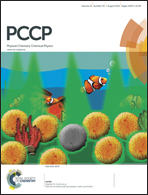Plasmon-enhanced photocatalytic water purification
Abstract
Increasing water demand and water scarcity around the world requires the development of robust and efficient methods for water purification in the coming decades. Here, we report a photocatalytic water purification method using visible light (532 nm) utilizing 5 nm gold nanoparticles and their enhancement when attached on the surface of silica nanospheres as an inactive support to prevent nanoparticle coalescence or sintering. This is a non-toxic, low-cost, and easy photocatalytic process which provides high decomposition rates. Decomposition of the methyl orange dye is tested as a reaction model and trichloroethylene is selected as an example of a real water pollutant. When irradiated at their plasmon resonant frequency, the gold nanoparticles generate hydroxyl radicals that degradate organic pollutants into non-toxic molecules representing a basic mechanism of photocatalytic water purification.


 Please wait while we load your content...
Please wait while we load your content...